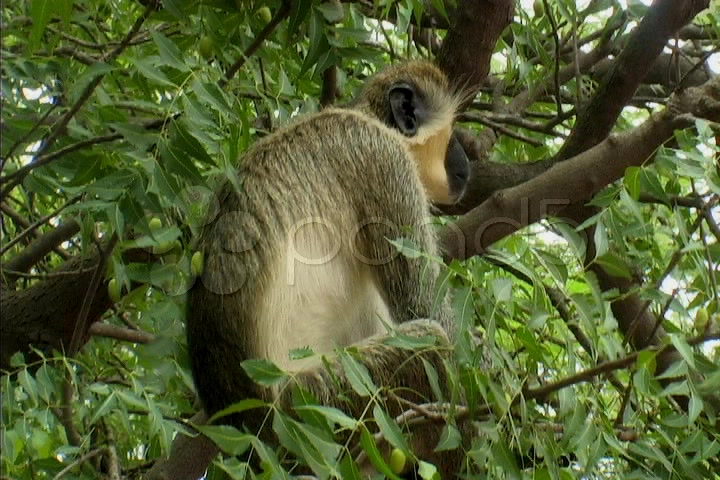We’ve all seen those funny videos and GIFs of monkeys falling out of trees. It’s an enduringly popular internet meme that never seems to get old. But why exactly do monkeys take those dramatic tumbles, and what’s going on behind the scenes when it happens? As a primate enthusiast, I decided to explore this question and share some monkey science.
Why Monkeys Fall
Monkeys are very well suited to living in trees. Their hands and feet can easily grab onto branches, and their tails help them stay balanced. They don’t have wings or helicopter blades, though, so staying in the air takes constant work. Monkeys can and do fall for variety of reasons .
-
Getting Slippery: In the rainforest, tree bark and branches get wet, mossy, and slippery. A monkey’s foot or tail can lose its grip at any time.
-
Breaking Branches – Monkey’s aren’t civil engineers. They don’t know the load-bearing limits of each branch they land on. If they leap onto a weak one, it can crack and send them tumbling.
-
Missing Jumps – Monkeys routinely leap and swing from branch to branch sometimes making daring leaps. But they misjudge distances and angles sometimes, especially young monkeys still learning the forest ropes.
-
Fighting—In monkey groups, there are often disagreements and even fights between members of the same group. When people push and wrestle, one of them might lose their balance and fall.
-
Clumsiness – Monkeys, like humans, have their uncoordinated moments. Some are naturally more graceful than others too. An awkward monkey might just plain slip and faceplant off a branch.
Falling Physics
When a monkey loses its grip or footing in a tree, gravity takes over. Acceleration due to gravity on Earth is 98 m/s^2 That means a falling monkey rapidly speeds up as it plunges downward.
The height of a monkey’s fall determines the final velocity it reaches. For example, falling from 10 meters results in a final speed of 14 m/s, while falling from 20 meters leads to a much faster 19.6 m/s.
A monkey’s large, spread-out body also acts as an airbrake, slowing descent. But falling speeds easily reach 10-15 mph. At those velocities, impacts with the ground or lower branches can lead to sprains, broken bones, and other injuries.
Recovery Reflexes
Fortunately, monkeys have adaptations that help them survive and recover from falls:
-
Gripping hands and feet – Even during a fall, a monkey instinctively reaches out with all four limbs, desperately trying to grasp anything it can. This may slow or stop the descent.
-
Rotating – Monkeys often twist in the air as they fall, rotating their head and body to face the ground. This orients their arms and legs for landing.
-
Curling – Before impact, monkeys pull in their arms and legs, forming a protective ball. This helps them roll with the momentum and avoid injuries.
-
Relaxing – Monkeys tend to go limp right before hitting. This looseness helps them dissipate energy and reduces risk of fractures and muscle damage.
-
Pain tolerance – Like most wild animals, monkeys have a high pain tolerance and recover quickly from strains, bruises, and scrapes. So they can usually shake off a fall and climb again within minutes.
Viral Hilarity
When monkeys take a embarrassing tumble, it strikes our funny bone because we see so much of our own clumsiness and vulnerability reflected. The over-dramatic flailing and pratfalling seems hilariously human and relatable.
Monkey mishaps also tickle our schadenfreude – taking pleasure from others’ misfortune. Seeing such agile climbers mess up reassures us that nobody’s perfect. And the fact that the monkeys pop right back up, wounded only in dignity, gives us license to laugh at their slapstick predicament.
So while monkey falls are serious business for the primates involved, they’ll remain viral comedy gold for human viewers. We’ll keep watching those silly primates take literal and metaphorical spills, making safely from our couch a lesson in hubris. And monkeys will keep climbing, leaping, and occasionally falling, blissfully unaware of their accidental entertainment career.

Monkey Smells Finger, Falls out of Tree….epic!
FAQ
What does the phrase monkeys fall from trees mean?
It means that regardless of how capable or skilled anyone is, sooner or later, we all lose our balance and make mistakes. You have probably never seen a monkey fall from a tree, even in a zoo. But everyone has seen remarkably capable people and successful companies make mistakes – in other words, fall from their trees.
Who said even monkeys fall from trees?
The Japanese proverb “saru mo ki kara ochiru” translates as “Even Monkeys Fall Out of Trees” and reminds us that even experts make mistakes.
Do spider monkeys fall out of trees?
They do not normally descend from the trees. They will leap or drop spread-eagled from one tree to another. Spider monkeys are dextrous with their tail as well as their hands. They pick up objects with the tail, and they hang from branches by using the tail alone.
